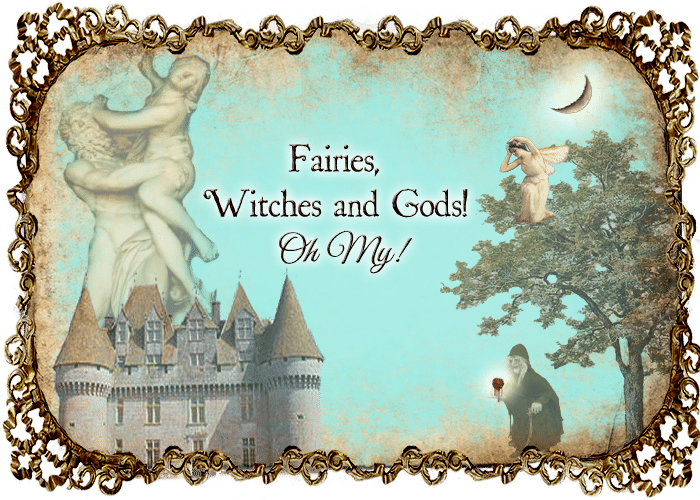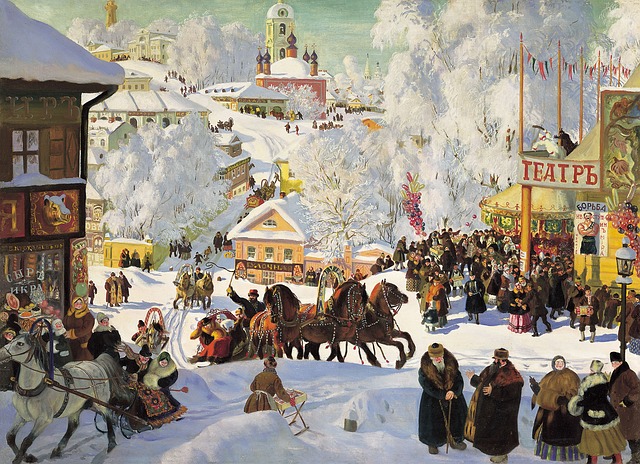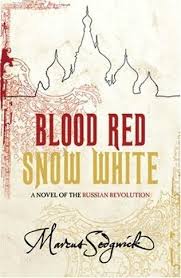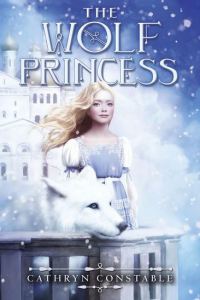THE FAIRY TALES: Russian fairy tales
THE SOURCE: Old Peter’s Russian Tales (1916) by Arthur Ransome
THE MEDIUM: Novels
THE NOVELS: The Snow Child by Eowyn Ivey, Blood Red, Snow White by Marcus Sedgwick, The Wolf Princess by Cathryn Constable
Once upon a time, there was an Englishman named Arthur Ransome who went to Russia and wrote a beloved book of fairy tales, Old Peter’s Russian Tales. Later, he returned to England and wrote a beloved children’s book, Swallows and Amazons.
Oh, and he was probably a spy.
Old Peter’s Russian Tales remains a magical book and a great introduction to Russian fairy tales. (Incidentally, I can’t believe my local library have removed it from circulation! What are they thinking?!?) Written in 1916, it introduces well-known characters of Russian folklore such as Baba Yaga, Prince Ivan and the Firebird. Because Ransome wrote the book for English children, to whom the Russian stories were entirely new, he made them accessible by creating an outer story that links all the tales together. Old Peter is a grandfather who lives in a hut in the forest and tells fairy tales every night to his grandchildren, Vanya and Maroosia (Russian versions of John and Mary, two very common names for English children at the time).
The tales he tells are linked to incidents in the family’s life, as they go through the different seasons of the year. Vanya and Maroosia also like to interrupt and comment on the tales, and the conversations between them and their grandfather create a cosy, reassuring picture of life in the forest, ideal for a children’s bedtime story, and softening some of the harsher, scarier aspects of Russian folklore.
In this article, I would like to look at three modern novels that take inspiration from Old Peter’s Russian Tales. The first is The Snow Child by Eowyn Ivey.
The Snow Child by Eowyn Ivey
The Snow Child is a direct re-telling of one of the tales, “The Little Daughter of the Snow,” re-located in Alaska in the 1920s. Jack and Mabel, a middle-aged couple, have moved to Alaska to make a fresh start in the face of their childlessness. But things prove difficult. The land is hard to tame, and Mabel cannot escape her grief. However, when the first snow falls, they find themselves building a snowman, or rather a snow girl. The next day, the snow girl has disappeared and there are tracks in the snow. Jack and Mabel start to catch glimpses of a girl with fair hair and a red fox, lingering around their cabin. So begins their relationship with Faina, the mysterious girl from the forest, who seems as untameable as the land itself. Who is she? Is she really a snow child come to life, or just an ordinary girl with a tragic past?
In the original tale, the snow girl runs away when springtime comes, but Eowyn Ivey takes the story further and deeper. Faina returns year after year, and as she grows, so the neighbors’ son, Garrett, falls in love with her. What will happen if Faina becomes a mother herself? Can she ever settle down to an ordinary, domestic life?
Another important difference is that it is never certain who and what Faina is. Mabel is convinced she is a snow child come to life. She grows overheated indoors and always goes away in the springtime. Jack believes she is an ordinary child, and sets out to find her past. There is always a level of ambiguity, certain things that are never explained. It is up to the reader to make up their own mind about what happens to Faina at the end of the book.
Eowyn Ivey maintains a close relationship with Old Peter’s Russian Tales throughout the book. The novel begins with a quotation from “The Little Daughter of the Snow,” and includes the entire story as an appendix. It is also woven into the text itself. Mabel remembers having a book of fairy tales in which an old couple make a snow child who comes to life, and asks her sister to send it to her. When the reply comes, the sister says:
“As to your request for this book, it is a pure stroke of luck that I was able to send it to you. A student from the university, a Mr Arthur Ransome, has been sorting through Father’s collections and was particularly enamoured with this book. Of all subjects, he is studying fairy tales of the Far North.” (1)
Arthur Ransome is then able to tell Mabel’s sister what the story says (as it is all in Russian) and provide some commentary on different versions of the tale. This little incident does not quite correlate with the actual details of Arthur Ransome’s life (as we shall see shortly), but it is lovely for Eowyn Ivey to pay homage to him by making him a character in the story. For a truer-to-life account of Arthur Ransome, we need to turn to our next novel.
Blood Red, Snow White by Marcus Sedgwick
Blood Red, Snow White is a tale about Arthur Ransome himself. Particularly his years in Russia. As a young man, before the revolution, he falls in love with Russia – a magical land – and after the revolution he falls in love with Trostsky’s secretary, Evgenia. It is these loves that really direct his actions, but being where he is – an Englishman in Moscow in the early 20th century – he finds himself being used as an agent by both Trotsky and the English government.
Old Peter’s Russian Tales is woven throughout the novel. It begins – as does Ransome’s book – with Old Peter living in the forest with his grandchildren. But instead of retelling old Russian tales, Marcus Sedgwick begins to tell the story of the Russian Revolution as if it were a fairy tale. This is a clever idea, as it makes complex political events easier to understand.
It also makes a sharp contrast with the next section of the book, when the fairytale land is replaced by, “a world of war and revolution, of tanks and telephones, of murder and assassination.” (2) One of the most upsetting events in this book is when the great bear that has finally awoken from its sleep and is prodded into action by Lenin and Trotsky, runs mad and kills Old Peter. We are later told that Arthur had considered having Old Peter killed by a bear in the original book, but friends had dissuaded him. (Is this true? I don’t know). But here it is symbolic (1) of the fact that innocent people did get hurt and killed by the revolution, and (2) that the revolution killed off the fairy tale version of Russia.
The novel also speaks much of Old Peter’s Russian Tales as a book. We are told of Arthur Ransome:
“Like all writers, he had been a reader first, and he thought that Russian fairy tales were the best in the world. People back home didn’t know these stories and he wanted to tell them.” (3)
At one point in the novel, Arthur only gets an introduction to the man who can get him back into Russia because Sir Esme, the British ambassador in Stockholm, has children who are fans of Old Peter’s Russian Tales. He also writes to ask his daughter Tabitha if she has read the book yet. Arthur’s relationship with Tabitha is the most moving in the novel. He is estranged from her mother, loves Tabitha deeply, but also loves Russia. And so, in a role-reversal of “The Little Daughter of the Snow,” it is he – the father – who keeps running away, back to the land of ice and snow.
The book ends with some fascinating real-life documents from the British Secret Service suspecting Arthur Ransome of being a Bolshevik and a double agent. The story of the novel itself ends with Arthur retiring to the Lake District, leaving politics behind, and going back to writing for children. And it is that return to fairy tale that is the theme of our third novel.
The Wolf Princess by Cathryn Constable
Like Old Peter’s Russian Tales, The Wolf Princess’s is definitely the work of someone who is deeply in love with Russia and its folktales. And, like Old Peter’s Russian Tales, it begins in the forest. Orphaned Sophie has a recurring dream of a frozen forest, a young woman, a wolf, and her father’s tales. Like Arthur Ransome, she dreams of going to Russia, the fairy tale Russia:
“Of vast lily pads of ice slipping down the inky River Neva. Of uprisings and royal bloodshed. Of the story of the poet who fought a duel on a bitter frosty dawn for the sake of his skittish young wife. And everywhere – under the hooves of the horses pulling sleighs through the streets, on the onion domes of churches, or covering the parks of ornate baroque palaces – snow.” (4)
We are now in the modern era, after the fall of the Iron Curtain and the collapse of the Soviet Union. In this tale, it seems possible that the lost fairytale world of Old Russia might still be waiting, hidden beneath snow and layers of dust, waiting to be rediscovered. In fact, this novel is in itself a fairy tale, about lost diamonds, white wolves and a princess returning from exile. And, of course, the heroine is an orphan, the least important of three friends. The sumptuous/faded sleeper train and the vozok (sleigh) that transport the girls away to the palace are like the magic ships and horses that take fairy tale heroes away on adventures. It is reminiscent of “The Three Men of Power – Evening, Midnight and Sunrise” in Old Peter’s Russian Tales, in which three princesses are blown away by a whirlwind and the Three Men of Power eventually find them in a gold palace, a silver palace and a copper palace. The name Sophie means wisdom, which reminds us of the Russian folk heroine Vasilissa the Wise. And the boy at the palace with whom she forms a friendship is Ivan, reminding us of Prince Ivan, or perhaps Vanya.
And “The Little Daughter of the Snow” surfaces yet again. When Sophie and her friends are sitting abandoned in a railway station in the middle of nowhere, Sophie remembers one of her father’s stories:
“”Oh grey wolf,” says the little snow girl…
Yes, that was how it went. The snow girl. She was called…Snegurochka? And what did she say to the grey wolf?
“I have lost my way and it is getting so dark, and all my little friends are gone.”…
“I will take you home,” says the old grey wolf. It was the story her father had told her: those were his words. She had been the snow girl and he had been the wolf. She knew she was meant to be frightened of the wolf, but because it was her father’s voice, she always felt sad when the wolf ran away.” (5)
Like Vanya and Maroosia, Sophie is an orphan. Like Tabitha Ransome, her father has gone away. But ultimately it is a wolf (or rather, wolves) that lead her home, save her life and help her find her true identity. Another little daughter of the snow has gone home to the magical frozen land.
References
1.Eowyn Ivey, The Snow Child (2012) p. 130
2. Marcus Sedgwick, Blood Red, Snow White (2007) p.69
3. Ibid. p.31
4. Cathryn Constable, The Wolf Princess (2012) pp.32-33
5. Ibid. pp.62-63
RELATED:
Read our book review of The Wolf Princess
ARE YOU A ROMANCE FAN? FOLLOW THE SILVER PETTICOAT REVIEW:
 Our romance-themed entertainment site is on a mission to help you find the best period dramas, romance movies, TV shows, and books. Other topics include Jane Austen, Classic Hollywood, TV Couples, Fairy Tales, Romantic Living, Romanticism, and more. We’re damsels not in distress fighting for the all-new optimistic Romantic Revolution. Join us and subscribe. For more information, see our About, Old-Fashioned Romance 101, Modern Romanticism 101, and Romantic Living 101.
Our romance-themed entertainment site is on a mission to help you find the best period dramas, romance movies, TV shows, and books. Other topics include Jane Austen, Classic Hollywood, TV Couples, Fairy Tales, Romantic Living, Romanticism, and more. We’re damsels not in distress fighting for the all-new optimistic Romantic Revolution. Join us and subscribe. For more information, see our About, Old-Fashioned Romance 101, Modern Romanticism 101, and Romantic Living 101.





